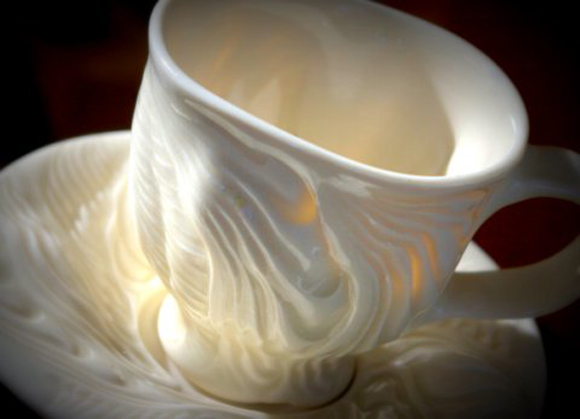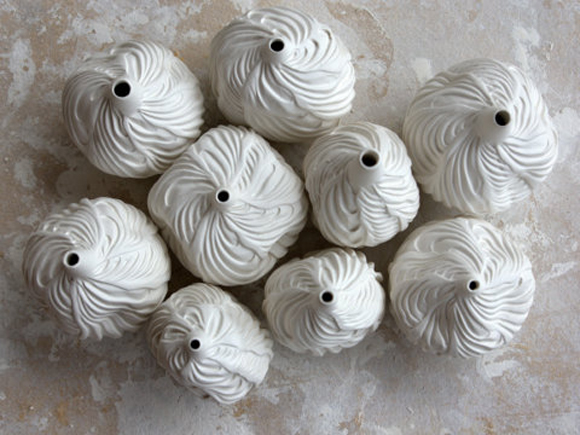The Embodied Art of Craft
Rachelle Chinnery
Rachelle Chinnery is a student in the MAIS program as well as a full-time ceramist living and working on Hornby Island, B.C. Her work is in international collections and in museums in Europe, Asia and Australia.
Cup & Saucer

Chinnery, 2014
One unusual trait of many craft artists is that they will speak of the medium as having chosen them instead of the other way around. Clay, for example, chose me. I am a ceramist committed to working with the vessel as a primary means of expression.
Clay chose me through a Japanese tea cup. The rough foot on my fingertips and its undulating and unrefined lip felt very different from the manufactured cup I had used most of my life. The cup spoke to me; it seemed sentient, and I don’t mean this metaphorically. An exchange was at play between my senses and the object in my hand. The cup drew my attention aesthetically, sensually, perceptually, and intellectually. It illustrated the fundamental difference between craft and what we’ve come to know as fine art in the West: craft is art for the feeling body, whereas art is for the perceiving mind. The art form of craft is where these attributes unite into embodied art—a concept spurned in the West, a casualty of our Cartesian culture.
Meaningful, ordinary, and skillfully hand-crafted objects are the art of daily life: our clothing, bowls and cups, tables, chairs, and weavings. We interact with these objects; they comfort us; we take food and drink from them; we cover our sleeping bodies at night with them. Craft is the art of the sensing body. Without it, we live surrounded by lifeless and meaningless things. Conversely, life with craft is one where everyday interactions with belongings have subtle but cumulative and affective significance.
Consider, for instance, a favourite coffee mug. The production process of a mug brings together the maker, medium, history, culture, and learned skill of ceramics as an expressive art. A conscious, committed ceramist will pay attention to detail, to the integrity of the piece, to its functionality as well as its aesthetic presence. Drinking from a mug made with artistic integrity affects us by the fact of the human investment and craftsmanship in that object. And sometimes the object is powerfully invested enough to physically convey the full spectrum of its making directly into our own bodies, just the way the Japanese tea cup did for me.
Crafted objects personify human relationships with materials as well as our relationships with each other. My medium is a historical substrate of human creativity; when it speaks to me imagery of geological time, space and substance, as well as the ecological mystery of life, are what I feel. Working with clay has profoundly informed my own thinking and interests, which were different before clay became a central presence in my life. Now, I’m exploring the relationship between the sentient earth, our sensing bodies, and how all of this contributes to balanced minds, bodies and souls. And it all began in a ceramic tea cup.
Yunomi

Chinnery, 2014
Bud Vases in Process

Chinnery, 2014